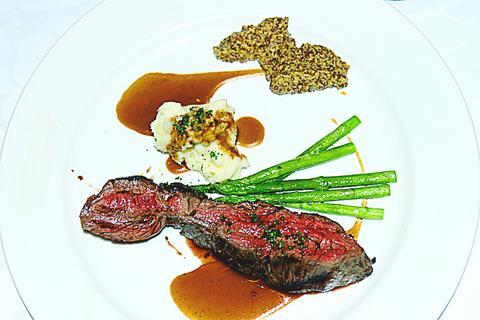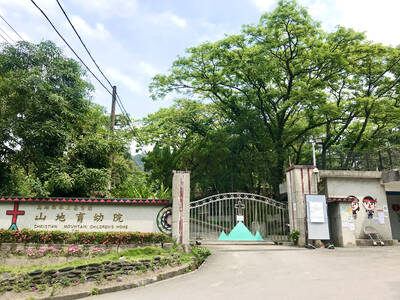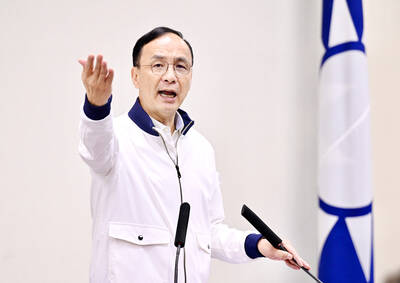Among the diversions of The Combat Zone, it might be easy to overlook the Imperial Hotel's Sonoma Grill, home to what some consider the best steak in town.
Daniel Lan (

PHOTO: ADAM ULFERS , TAIPEI TIMES
Currently victim to a Taiwan ban on US beef imports, Sonoma Grill has had to find a different distributor. Its substitute, akin to the acclaimed Kobe beef of Japan, is Australian Wagyu beef. Australian certified Wagyu beef herds are raised in clean air, on a formulated diet and are known for the pampering they receive -- as a prelude to the fine dining they will provide.
The elegant mahogany backdrop and comfortably dim lighting creates an ambiance that successfully creates an undeniable meat lovers' haven. Because you can expect to spend somewhere between NT$1,500 to NT$2,500 a person, the restaurant focuses on dinner from 5:30pm until 10pm, but is also open for lunch between 11:30am and 2:30pm.
The chef grills six different cuts of the featured Wagyu New York strip steak as well as Matsusaka steak, both delectable. You would, however, be doing yourself an injustice to visit and not order the Wagyu Gourmet Cut. Accompanied by a small starter, or not, it is best
complemented by a house red or white wine.
There are also set menu options, consisting of the Chef's Tasting Gourmet Specials and the Teppanyaki Specials. The Chef's specials include teppan-steamed live lobster and the Wagyu prime cut, while the teppanyaki specials highlight the teppan fried rice with vegetables and the Matsusaka Steak.
If you are a not a red meat person, the lobster, or an assortment of the smaller portions among the side orders such as king prawn Caesar salad, traditional French onion soup and sauteed Shiitake Mushrooms make tantalizing alternatives.
The accommodating and friendly staff will keep your glasses full and provide some of the best service to be found in Taipei. The restaurant was previously located in Tianmu, but has since been relocated to the Imperial Hotel on Linsen North Road.
"Business is quite good, better since the move and we frequently see celebrities eating in our restaurant," Lan said. So if you are looking for a delicious loin, or a chance to spot your favorite movie star you can't go wrong here.

May 18 to May 24 Pastor Yang Hsu’s (楊煦) congregation was shocked upon seeing the land he chose to build his orphanage. It was surrounded by mountains on three sides, and the only way to access it was to cross a river by foot. The soil was poor due to runoff, and large rocks strewn across the plot prevented much from growing. In addition, there was no running water or electricity. But it was all Yang could afford. He and his Indigenous Atayal wife Lin Feng-ying (林鳳英) had already been caring for 24 orphans in their home, and they were in

On May 2, Chinese Nationalist Party (KMT) Chairman Eric Chu (朱立倫), at a meeting in support of Taipei city councilors at party headquarters, compared President William Lai (賴清德) to Hitler. Chu claimed that unlike any other democracy worldwide in history, no other leader was rooting out opposing parties like Lai and the Democratic Progressive Party (DPP). That his statements are wildly inaccurate was not the point. It was a rallying cry, not a history lesson. This was intentional to provoke the international diplomatic community into a response, which was promptly provided. Both the German and Israeli offices issued statements on Facebook

President William Lai (賴清德) yesterday delivered an address marking the first anniversary of his presidency. In the speech, Lai affirmed Taiwan’s global role in technology, trade and security. He announced economic and national security initiatives, and emphasized democratic values and cross-party cooperation. The following is the full text of his speech: Yesterday, outside of Beida Elementary School in New Taipei City’s Sanxia District (三峽), there was a major traffic accident that, sadly, claimed several lives and resulted in multiple injuries. The Executive Yuan immediately formed a task force, and last night I personally visited the victims in hospital. Central government agencies and the

Australia’s ABC last week published a piece on the recall campaign. The article emphasized the divisions in Taiwanese society and blamed the recall for worsening them. It quotes a supporter of the Taiwan People’s Party (TPP) as saying “I’m 43 years old, born and raised here, and I’ve never seen the country this divided in my entire life.” Apparently, as an adult, she slept through the post-election violence in 2000 and 2004 by the Chinese Nationalist Party (KMT), the veiled coup threats by the military when Chen Shui-bian (陳水扁) became president, the 2006 Red Shirt protests against him ginned up by